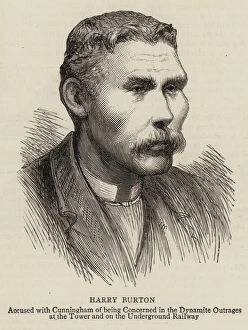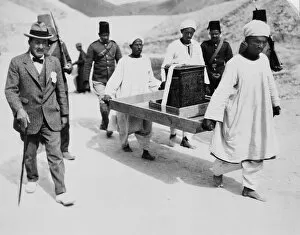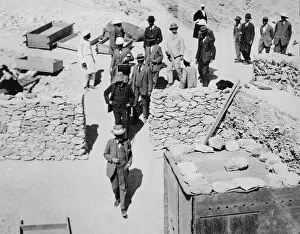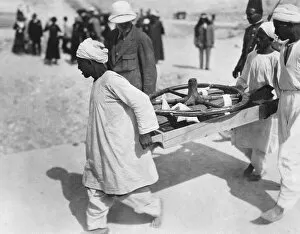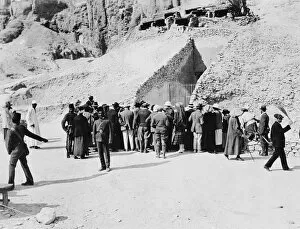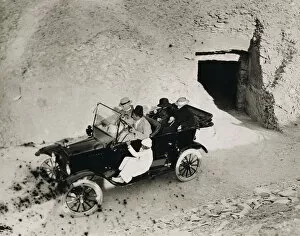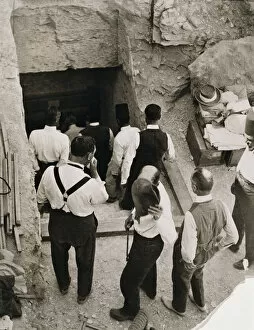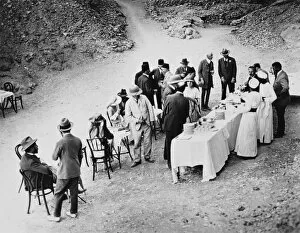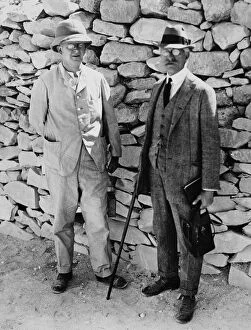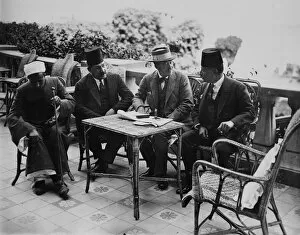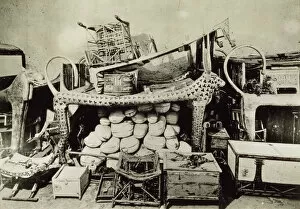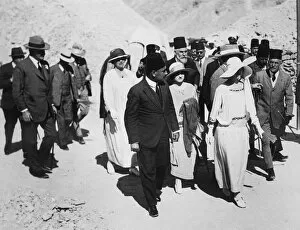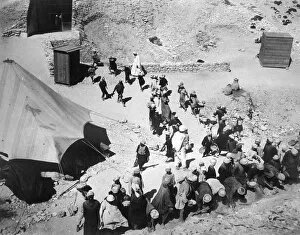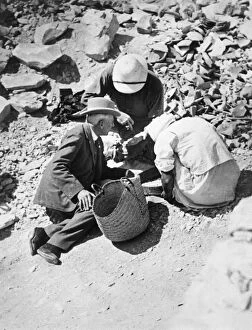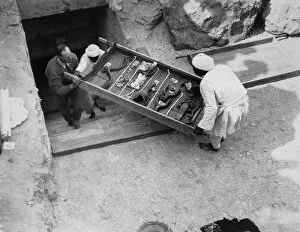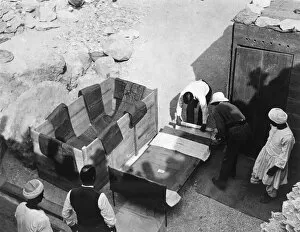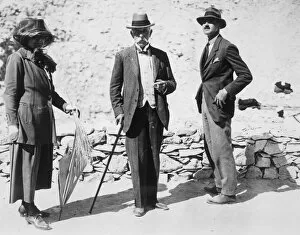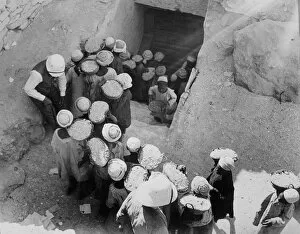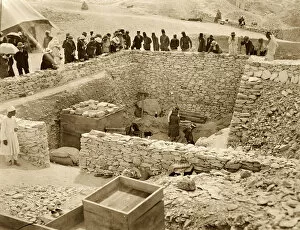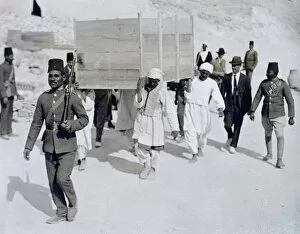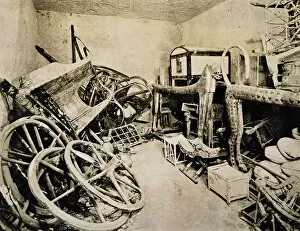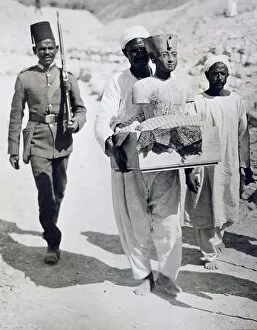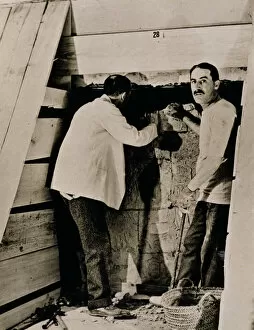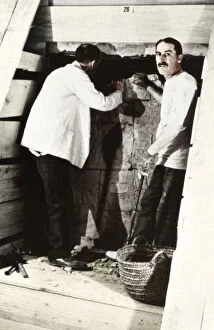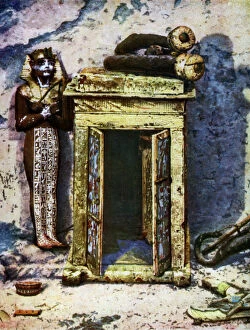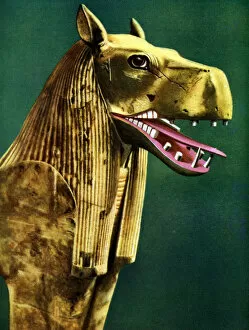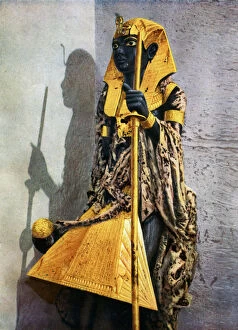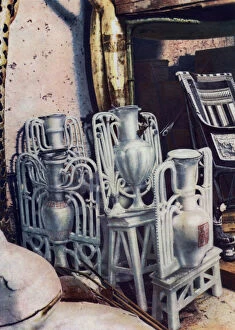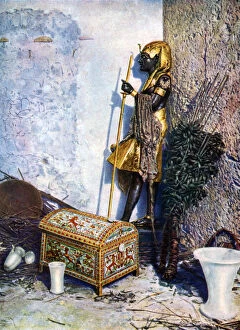Harry Burton Collection
Harry Burton: Capturing the Mysteries of Tutankhamun's Tomb Step into the world of Harry Burton
For sale as Licensed Images
Choose your image, Select your licence and Download the media
Harry Burton: Capturing the Mysteries of Tutankhamun's Tomb Step into the world of Harry Burton, an engraver and artist who immortalized one of history's greatest archaeological discoveries. Through his engravings, we are transported back to the early 20th century when the tomb of Tutankhamun was unveiled in Egypt's Valley of the Kings. Burton's Triple Nest of Golden Caskets to Preserve Poor Human Clay, created around 1935, showcases his intricate craftsmanship. The rich carvings and golden shine on his Glittering Canopic Shrine bring us closer to understanding ancient Egyptian burial practices. But it is through Burton's photographs that we truly witness history unfolding before our eyes. His lens captured pivotal moments such as the Removal of the gilt shrine from Tutankhamun's tomb in 1922-1923. We can almost feel the anticipation as a Funeral bouquet is delicately removed from its resting place within this sacred space. In another photograph, we see an unofficial opening of Tutankhamun's tomb in 1922, and is here that Burton skillfully captures a crowd eagerly awaiting a glimpse into this hidden treasure trove. Lord Carnavon himself makes an appearance during his first visit to the Valley of Kings – a testament to how significant this discovery truly was. As we descend down steps alongside partygoers in 1923, we can almost hear their whispers and gasps as they approach Tutankhamun’s final resting place. And finally, on February 18th, 1923, with bated breaths and hearts racing, witnesses gather for the Opening of the inner chamber - an event etched forever by Burton’s artistic hand. Through Harry Burton’s work, these extraordinary moments become tangible once more. They transport us back to a time when ancient wonders were unearthed and shared with awe-struck audiences worldwide.

